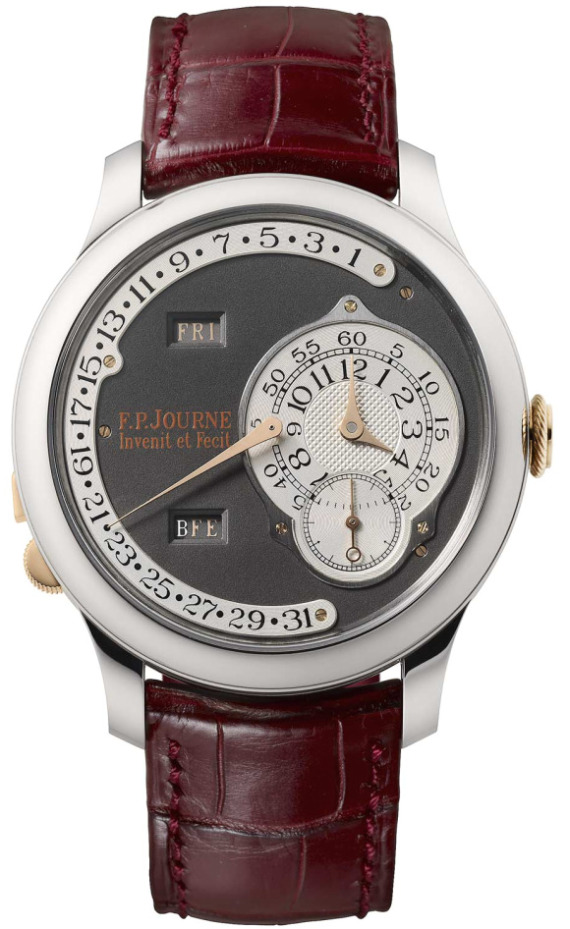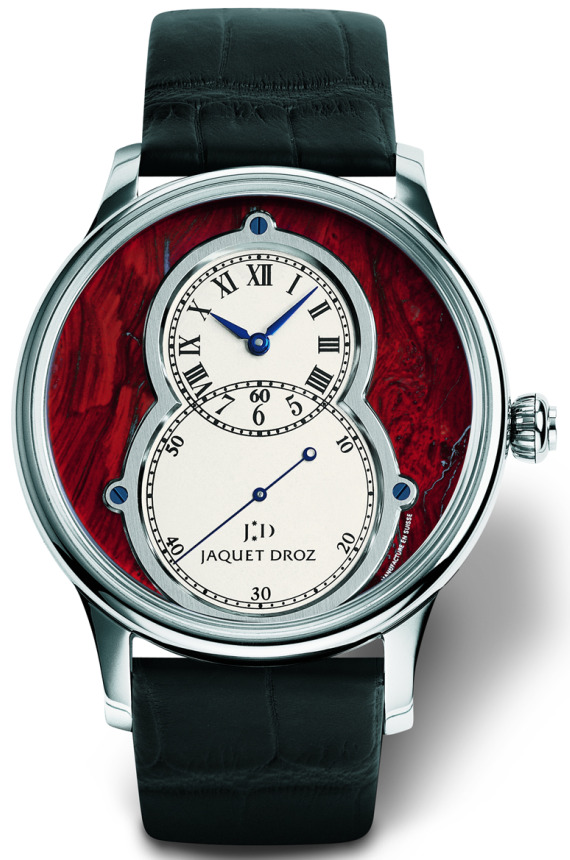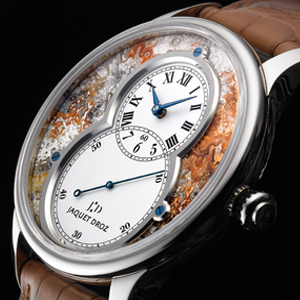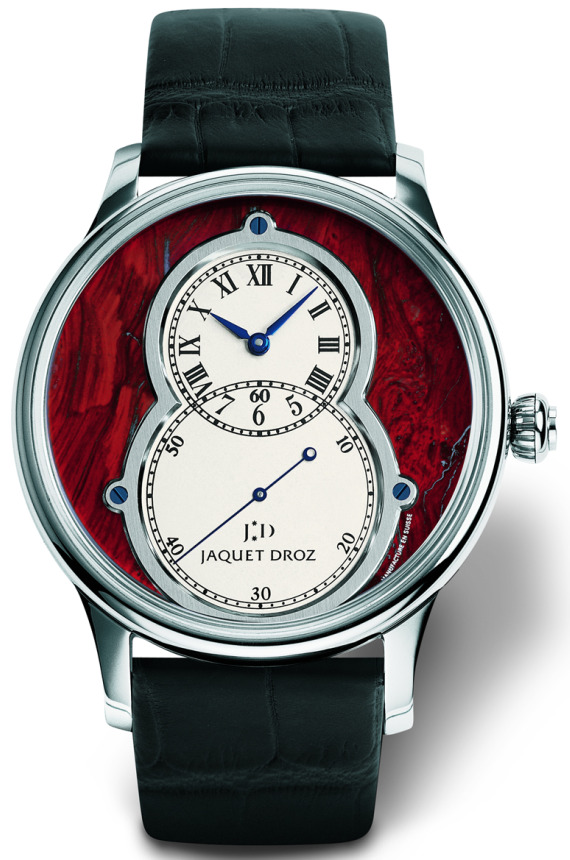
I really wish I could read French right now. It seems that even though I am an attorney I don’t quite understand this case. First is the language barrier, and second is the legal barrier. UPDATE: I’ve learned that the translated text was so confusing that I got the facts (not the law) of this case wrong. To please see the updated version as follows…
This is a European case that isn’t applying US law. But let me give it to you as I understanding. After 5 years, and at least one appeal, Swiss watch maker F.P. Journe has been ordered to pay damages to Jaquet Droz and the Swatch Group (owner of Jaquet Droz) in the amount of tens of thousands of euros for infringement of Jaquet Droz’s intellectual property rights for legal cost damages. It looks like Jaquet Droz was accused by FP Journe to have copied designs that FP Journe allegedly has created. This this would have been a copyright infringement case . Let me explain (not a hardcore legal discussion, don’t worry).
In the world of watches, protecting a design under an intellectual property theory is very tough. That is because most of the watch design is considered functional, difficult to remove from the “purely aesthetic” elements, and mostly under the realm of patent law to protect, if at all. There is also the concept of designs that cannot be protected because they have been around so long, as countless watch designs have utilized them. So for all intents and purposes, most watch designs are in the “public domain,” because it has “all been done before.”
What can be protected aside from those functional elements where a patent is specially obtained, are items that fall under copyright or trademark law. Again, I am using US law, but it is likely quite similar in Europe (at least in France and Switzerland). Trademark law is going to protect things such as logos, “signature” or iconic (distinctive) traits of a watch brand that lead consumers to believe they are from a particular brand. Aside from logos and such, this is tough to prove, but theoretically should protect certain things. On the copyright angle, we have those original artistic expressions that are protected. But here you need to prove designs are original (tough), and you need show copying to a degree. Slight changes here and there could still be infringements (derivative protections), but often are not. Look at the classic example of the Rolex Submariner. There are countless “copies” of the watch. All that don’t say “Rolex” on them are likely perfectly legal “copies.” Why? Because they are simply applying a theme or type of watch. Things like a rotating diver’s bezel, the hour markers, hands, bracelet, etc… can all said to be “functional” and not artistic expression. For that reason only a patent could protect them – and such patents would have expired long ago if there were ever obtained in the first place.

So going back to the F.P. Journe and Jaquet Droz situation. In 2004 FP. Journe apparently accused Jaquet Droz of copying the looks of its Octa Automatic watch – that has a small frame secured with three screws over the smaller hours and minutes, with a second subdial in the middle of the watch dial. It is really the three screws and their “figure 8” layout which FP. Journe was accusing Jaquet Droz of copying. Everything I have read about this situation was translated from French, so I am doing my best to understand it all. Based on the language, it appears at though the issue was based around copyright – but it could have trademark infringement elements in it. This is because the FP Journe Octa watch featured this design, and they could have made the argument that there is a consumer association between the design and the brand. Trademark protection is all about product or service origination association, and (real or likely) consumer confusion.
Both courts sided with Jaquet Droz and not FP Journe. Why? Because Jaquet Droz presented evidence of older pocket watch designs that it copied, and that those designs not only predated the FP Journe designs, but that they were not original to FP Journe. Why did FP Journe end up paying Jaquet Droz even though they brought the suit? I believe that because the law in Europe sometimes has the losing party pay for the legal costs of the winning party. The specific watch that FP Journe released that had the infringing design was the Octa (see above is the Octa Perpetual watch in titanium). I am not 100% sure this specific watch was part of the suit (as I seems to have been released recently), but it does display how FP Journe used the design that they alleged was being copied.
I personally suspect that the suit was based on a degree of bad blood between the companies. There are potentially dozens of situations like this each year that occur. Where one company could theoretically sue another watch maker for intellectual property infringement and have a good case. Why don’t they? One, because it is expensive as hell, and the results are highly speculative. Plus, I believe that this typing of “copying” is often an accepted part of the watch industry. Watches are often sold due to quality, branding, and marketing. Not about who has right combination of design elements. The major weapon many watch companies have is their brand images, and sometimes the technical ability to do things that one could not copy even if they wanted to.

Given the years of time and massive legal expenses it is unclear exactly what FP Journe wanted to prove by funding this legal battle. They ended up having to actually pay the Swatch Group, even after all the years of bitter battling. Seems like a not so wise thing to do for a smaller independent watch brand. If you think about it, all Jaquet Droz needed to do was prove that the FP Journe watch design was not original and it was “case closed” so to say.
As to my suspicion of bad blood between the opponents, I can only speculate as to the reasons, but the situation seems likely given what is at risk weighed with the potential outcome of the case. Having had a difficult time dealing with FP Journe myself, I can easily see why they might get overly zealous in a situation like this. Plus, it is well known in the watch industry that the Swatch Group is very hard headed and won’t stand down from a (real or potential) fight. Further still, I believe it is a matter of pride for the watch makers and executives involved. They hate having their ideas stripped as they feel a deep sense of ownership over those watches they release. All the watches involved here are high-end to very high-end. So the pool of people that would even be consumers or know what the watches here are is small. If this were an issue involving watches where millions of units are made, then it would have been a more practical legal battle.
I last want to say that if this case occurred in the US, applying US law, I don’t think the case would have lasted quite that long. European laws tend to be more protective of intellectual property when it comes to art (and watch design falls into that). In the US, really only copyright or trademark law could have applied. The use of screws on dials, and frames around subdials has been done before, and frequently. So have overlapping subdials. Thus, I feel that at least in the US, FP Journe would have had a really hard time finding an issue that contained a true question of the law in this regard in the first place – let alone a 5 year long legal battle. Which again, is why you so infrequently see cases like this.
For more information see smaller articles on this case (in French) at these two places on Business Montres and World Tempus. Plus the appeals court decision PDF via World Tempus.
[phpbay]jaquet droz | f.p. journe, num, “14324”, “”[/phpbay]
